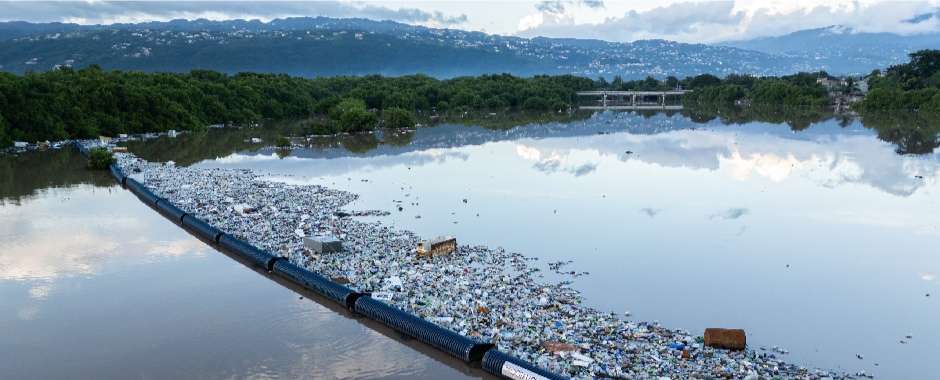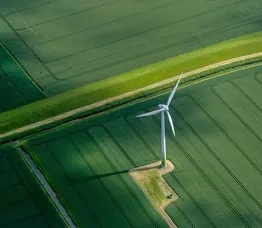The Ocean Cleanup, Nokia Private Wireless and MCS unite to clean the Great Pacific Garbage Patch

Trillions of pieces of plastic are floating in our planet’s oceans today, and more than one million metric tons of plastic leaks into the Earth’s oceans every year. Over time, these plastics continuously break down into microplastics that are toxic to aquatic life, causing species to experience reduced food intake, delayed growth, oxidative damage, and abnormal behavior.1 While there is as yet no scientific consensus on the health effects of human consumption of seafood containing microplastics, research indicates that it may cause oxidative stress, cytotoxicity, neurotoxicity, immune system disruption, and the transfer of microplastics to other tissues.2
Due to circular currents in the oceans, 100 million kilograms (220+ million lbs.) of plastic have collected in the Great Pacific Garbage Patch: a massive, swirling plastic soup twice the size of Texas located in the north Pacific Ocean, 1,200 miles off the coast of California.
The Ocean Cleanup is an internationalnon-profit founded in the Netherlands in 2013 with the mission of ridding the oceans of plastic. Nokia Private Wireless network technology and Nokia channel partner MCS play essential roles addressing communication challenges in The Ocean Cleanup’s work to tackle the Great Pacific Garbage Patch.
Connecting the largest cleanup in history
The Ocean Cleanup’s 150-person team, including engineers, researchers, scientists, and computational modelers set out to develop an effective, sustainable means of collecting the plastic waste in the Great Pacific Garbage Patch. They came up with a solution whereby a massive, U-shaped open-bottom mesh is towed across the surface of the ocean. The mesh gathers the plastic and guides it into a retention area, from where it is later extracted and loaded onto a ship for sorting, processing and recycling.
At first glance, it was a viable solution; however, a major obstacle remained before it could be realized. The proposed solution would require an extraordinary amount of reliable, real-time data and video communication among moving vessels on the open ocean, under often-extreme environmental and weather conditions. Without exceptional, reliable communications, they would be unable to support control and coordination of the vessels needed to deploy and tow the system across the surface of the ocean, nor could they continuously monitor the process to minimize the negative impact on marine life.
A reliable private wireless solution 1,200 miles offshore
The Ocean Cleanup engaged with MCS, a Netherlands-based Nokia Value Added Distributor specialized in IIoT and private networks, to support its communications needs. For the first trial version of its cleanup solution, dubbed System 001, MCS designed a network of 50 sensors to detect water leaks and the effects of waves on the system. For this project, MCS received a Telecom Inspirience Award for Best IoT Project. Following this successful trial, The Ocean Cleanup launched the improved System 002 – a much larger solution that would require a more robust communications system.
As a certified Nokia Digital Automation Cloud (DAC) provider, MCS brought in Nokia to collaborate with The Ocean Cleanup team to develop a more comprehensive communications solution for System 002. Working together, MCS, Nokia, and The Ocean Cleanup developed a Private LTE Network solution that leverages cameras, IoT sensors, and a wireless modulation technique derived from Chirp Spread Spectrum (CSS) technology.
During operations, cameras with live feeds and sensors monitor the plastic collection process across an area from 100 meters to 2500 kilometers (1553 miles) from the main towing vessel, where the control center is located. The system is equipped with multiple features to minimize chances of negative encounters with marine life; however, should an animal enter the system, the cameras can spot it immediately and alert the team to release it unharmed. All communications from the setup to the control center in the main vessel are handled by the Nokia LTE private wireless network, which includes leading-edge Nokia DAC equipment.
Scaling up together with a viable solution
The solution has since been scaled up once again with System 03, three times larger than System 002 and with efficiency upgrades to reduce the cost-per-kilogram of plastic captured and maximize net benefit to the marine environment. This expanded deployment necessitated the development of a state-of-the-art LTE private wireless network that could deliver a reliable, long range IP solution under constantly changing weather and surface conditions in the open sea. MCS and Nokia also provided insights on how next-level technology such as Artificial Intelligence (AI) could support camera surveillance.
The Ocean Cleanup now has reliable, state-of-the-art mission-critical communications on the open sea, enabling the organization to fulfill its mission. The system provides continuous, live feeds (instead of stills) during operations spanning an area of 4km+ with greater than 99.5% uptime.
System 03 has made an encouraging start and to date The Ocean Cleanup has removed thousands of tons of plastic from the Great Pacific Garbage Patch, clearly demonstrating what Nokia CEO Pekka Lundmark has often said: “There is no green without digital.”
Joining forces to solve a planetary problem
Following the deployment of System 03, enabled by the leading-edge LTE private wireless network, The Ocean Cleanup intends to expand its fleet to 10 systems. These 10 systems will deliver the capacity to completely clean up the Great Pacific Garbage Patch – once and for all.
But that’s just the beginning. There are four other massive garbage patches scattered around the Earth’s oceans. The Ocean Cleanup hopes to tackle those areas and remove 90% of floating ocean plastic by 2040, thus restoring and sustaining the natural habitat of our seas.
The solution developed and deployed by The Ocean Cleanup, MCS, and Nokia highlights the importance and value of partnerships in crafting unique and innovative solutions to global technological challenges. The close cooperation between the three organizations is what made this unique solution possible, harnessing innovation to solve a complex environmental problem that impacts our planet more seriously every day, and helping to transform the health and future of the planet.
Resources:
[1]https://iopscience.iop.org/article/10.1088/1755-1315/631/1/012006/pdf
[2]https://www.frontiersin.org/articles/10.3389/fenvs.2022.827289/full




